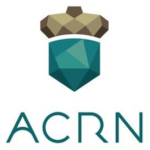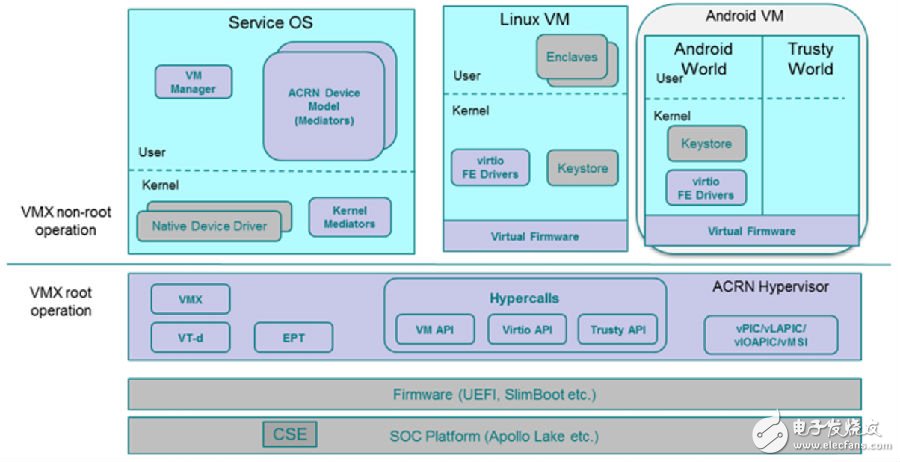ACRN is a flexible, lightweight hypervisor that is designed with real-time and security in mind.

As the scale of the Internet of Things grows exponentially, IoT developers need to support a variety of different hardware resources, operating systems, and software tools/applications. This is a big challenge because many interconnected IoT devices are subject to various limitations on resources such as running memory space, flash size, and number of CPU cores. Virtualization helps meet these broad needs, but existing virtualization solutions do not provide the right mix of size, flexibility, and functionality for IoT development.
I 
The design of ACRN is different. Released at the Linux Embedded Conference in 2018, ACRN is a flexible, lightweight reference hypervisor designed with real-time and critical security in mind and optimized for lean embedded development through an open source platform.
One of the biggest advantages of ACRN is its small size, which is only about 25K lines of code when it is released. The Intel Open Source Technology Center contributed the source code for the release of the project. Imad Sousou, Intel's vice president and general manager of the Open Source Technology Center, said, "ACRN's idea comes from our work of providing virtual technology to users. Embedded IoT development is very labor intensive. Using hypervisor technology, loads of different importance can be Being integrated into one platform reduces development and deployment costs and allows for a more streamlined system architecture."
About the name: ACRN is not an abbreviation, pronounced "acorn", (acorn English means acorn). Although the beginning is small, it can grow very long, similar to the way the project hopes to grow through the community. ACRN has two key components: the hypervisor and the ACRN device module. The ACRN Hypervisor is a Type 1 hypervior that can run directly on bare metal. The ACRN Device Module is a reference framework implementation for virtual device emulation, which provides rich I/O virtualization support and is currently planned to support audio, video, graphics and USB. As the community grows, more device virtualization features are expected to join.
how to work?
The ACRN Hypervisor runs on bare metal and can then run a Linux-based service operating system (SOS) on it, which can then run multiple guest operating systems simultaneously to consolidate workloads. The ACRN hypervisor creates the first virtual environment for the Service OS and then launches the Guest OS. The Service OS runs local device drivers to manage the hardware and provides I/O mediaTIon to the Guest OS.

The Service OS runs on the highest priority virtual machine of the system to meet the time requirements for sensitive requirements and system quality of service (QoS). Service OS can currently run Clear Linux*, but ACRN also supports other Linux* distributions or proprietary RTOSs as Service OS or Guest OS. Community help is invited to develop support for other versions of the Service OS and use the ACRN reference stack to support other versions of the Guest OS, such as other Linux* distributions, Android*, Windows*, or proprietary RTOS.
In order to keep the ACRN hypervisor code base as small and efficient as possible, most device module implementations reside in the Service OS to provide device sharing and other functions. The goal is to ensure small-scale, low-latency code base optimization on resource-constrained devices, and to build virtualization-specific features for the IoT development platform, such as graphics, media, audio, images, and other I/O that need to share resources. equipment. In this way, ACRN fills the gap between the hypervisor for the big data center and the direct hardware partition hypervisor, which is ideal for various IoT development.
An example is a software defined cockpit (SDC) in a vehicle. Using ACRN as a reference implementation, vendors can build solutions that include dashboards, in-vehicle entertainment systems (IVIs), and one or more rear passenger entertainment systems (RSEs). The IVI and RSE systems can operate as isolated virtual machines (VMs), taking into account overall system security issues. Software-Defined Industrial Systems (SDIS) are another good example of networked physical systems, the Internet of Things, cloud computing, and cognitive computing. ACRN can help SDIS integrate industrial workloads and enable flexible scheduling across systems. This helps users benefit from low power consumption, simplified security, improved reliability, and simplified system management.
Early supporters of ACRN included Intel, ADLink ADLINK, ApTIv, LG Electronics and Neusoft. Community developers are also welcome to download the code and participate in the contribution of ACRN GitHub. For more use case information and participation information, please visit the ACRN website. Welcome to the Open Source Summit and Embedded Linux Conference (Europe), held in Edinburgh, UK on October 22-24, 2018. More than 100 conferences will be held for Linux, cloud, container, AI, and community.
Note: This article was written by the Linux Foundation, some of which was provided by Eddie Dong, chief engineer of the Intel Open Source Center.
Shenzhen Kate Technology Co., Ltd. , https://www.katevape.com